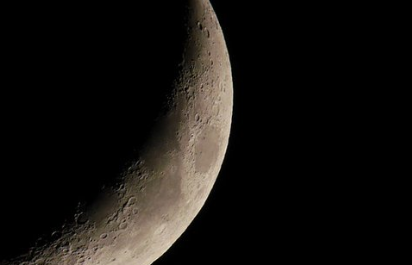China’s stolen tech from the U.S. has them discovering some amazing finds on the moon. We now know that there is a water source on our Moon. This will help greatly when humanity begins to colonize the lunar surface.
Chinese scientists have made a groundbreaking discovery by identifying water molecules in lunar soil samples, a first in the quest to understand the Moon’s potential for life. The discovery comes from the lunar soil brought back by China’s Chang’e-5 mission in 2020. Researchers from the Institute of Physics at the Chinese Academy of Sciences found a new mineral, dubbed “unknown lunar mineral” (ULM-1), which contains up to 41% water by mass. This mineral is rich in water and ammonia molecules, indicating a complex history of lunar degassing and suggesting potential resources for future lunar habitation.
Chinese scientists have made a groundbreaking discovery of water molecules in lunar soil, a finding that could significantly enhance our understanding of the Moon’s evolution.#China #ChinaSciencehttps://t.co/IeQIZUU0ud
— chinaspotlight (@chinaspotlight1) July 24, 2024
ULM-1’s molecular formula includes six crystalline waters, and its structure closely resembles that of novograblenovite, a terrestrial mineral formed through interactions between hot basalt and water-rich volcanic gases. The presence of ammonium in ULM-1 adds another layer of complexity, hinting at a rich and dynamic lunar history. The scientists ruled out terrestrial contamination or rocket exhaust as the source of this hydrate, based on its unique chemical and isotopic compositions.
The discovery challenges the long-standing concept of the Moon as a dry, barren place—a notion that had been prevalent since the U.S. Apollo missions in the 1960s. Initial analyses of lunar soil samples from those missions found little evidence of water, leading to the “dry Moon” theory. However, advances in technology, such as microanalysis techniques and remote sensing, have increasingly pointed to the presence of water on the Moon. In 2009, India’s Chandrayaan-1 mission detected signs of hydrated minerals on the lunar surface, followed by NASA’s discovery of water molecules in the Clavius crater in 2020.
Understanding moon: Chinese scientists find 1st trace of lunar water https://t.co/yuSgKd7kDs pic.twitter.com/Ax9upzekrr
— AZERTAC News Agency (@AZERTAC) July 24, 2024
This recent find not only confirms the presence of water on the Moon but also opens up new avenues for research and exploration. According to Shuai Li, a planetary scientist at the University of Hawai’i, understanding the formation of lunar water is crucial for future lunar habitats and may also provide insights into the processes of lunar formation and evolution.
While the discovery of ULM-1 is a significant step forward, it also raises new questions about the origins and chemical forms of lunar hydrogen. Despite these advancements, there are still challenges to overcome before humans can fully utilize these water resources for future lunar missions.
Key Points:
- Chinese scientists found water molecules in lunar soil samples from the Chang’e-5 mission.
- A new mineral, ULM-1, contains up to 41% water by mass.
- ULM-1 also contains ammonia, indicating complex lunar history.
- The discovery challenges the “dry Moon” concept and opens avenues for future lunar exploration.
- The findings have significant implications for lunar habitation and understanding lunar evolution.
RM Tomi – Reprinted with permission of Whatfinger News

